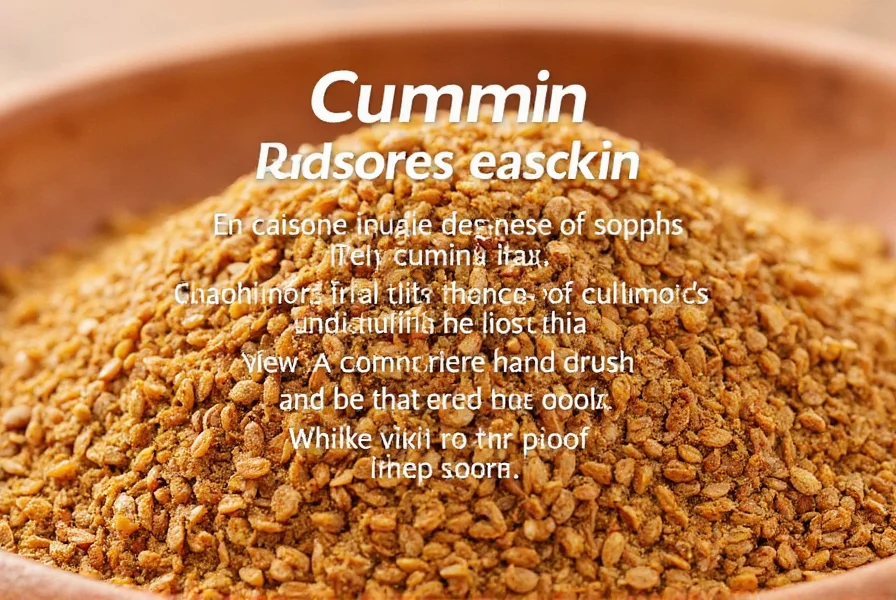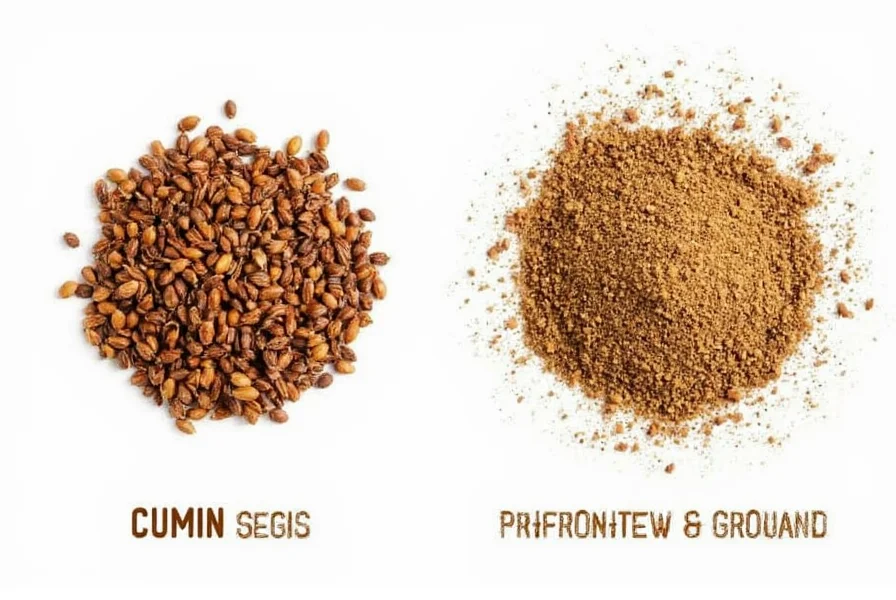Understanding how to say cumin correctly matters whether you're ordering at a Middle Eastern restaurant, following a recipe, or discussing spices with fellow cooking enthusiasts. This common spice appears in cuisines worldwide, making proper pronunciation valuable for clear communication in culinary contexts.
Breaking Down Cumin Pronunciation
The word 'cumin' consists of two syllables with the stress on the first syllable:
| Syllable | Pronunciation | Sound Example |
|---|---|---|
| Cu | KOO | Like 'boom' or 'room' |
| min | min | Like 'min' in 'minimum' |
When saying 'cumin,' avoid these common mistakes:
- CUH-min (with a short 'u' sound) - This is the most frequent error
- KYOO-min (adding a 'y' sound) - Incorrect despite some regional variations
- COO-min (like 'cool') - Not the standard pronunciation
Why Correct Cumin Pronunciation Matters
Proper pronunciation of culinary terms like cumin demonstrates respect for food cultures and prevents confusion. In professional kitchens or specialty food stores, saying 'KOO-min' immediately signals your familiarity with international ingredients. Chefs and spice merchants appreciate when customers use the authentic pronunciation, which often leads to better service and more detailed recommendations.
When ordering dishes containing cumin at restaurants, using the correct pronunciation helps ensure you're getting the authentic preparation you expect. Many Middle Eastern and Indian dishes rely on cumin as a key ingredient, and servers may adjust their recommendations based on your apparent knowledge of the cuisine.

Origin of the Word 'Cumin'
Understanding the etymology of 'cumin' helps with proper pronunciation. The word entered English from the Old French 'cumin,' which came from the Latin 'cuminum,' ultimately tracing back to the Greek 'kyminon' and Hebrew 'камון' (kammon). Despite these origins, the English pronunciation settled on 'KOO-min' rather than preserving the 'ky' sound.
The spelling reflects the word's complex journey through languages, which explains why the 'c' is silent and the 'u' takes a long vowel sound. This pattern appears in other English words with similar linguistic histories.
Regional Pronunciation Variations
While 'KOO-min' represents the standard American and British English pronunciation preferred in culinary contexts, some regional variations exist:
- American English: Predominantly 'KOO-min' (with some regional 'CUH-min' usage)
- British English: Slightly more variation but 'KOO-min' remains standard
- Indian English: Often 'KOO-min' but sometimes closer to the Hindi 'jeera' (जीरा)
For authentic culinary communication, especially when discussing Middle Eastern, Indian, or Mexican cuisines where cumin features prominently, 'KOO-min' remains the recommended pronunciation.
How to Practice Cumin Pronunciation
To master the correct pronunciation of cumin, try these techniques:
- Repeat the phrase: 'The KOO-min adds warmth to the curry'
- Break it into syllables: KOO...min (emphasizing the first syllable)
- Record yourself saying 'cumin' and compare with online dictionaries
- Practice with similar words: 'room-min,' 'gloom-in,' 'boom-in'
Many online dictionaries provide audio pronunciations that serve as excellent references. When searching for 'how to pronounce cumin,' look for results from reputable dictionaries like Merriam-Webster or Oxford, which feature professional audio clips from native speakers.

Related Culinary Terms Often Mispronounced
While learning how to say cumin correctly, you might also want to master these commonly mispronounced spice and ingredient names:
- Gyro: Correctly pronounced 'YEE-ro' (not 'JY-ro')
- Quinoa: Properly said 'KEEN-wah' (not 'kwin-O-ah')
- Foie gras: French pronunciation 'fwah GRAH' (not 'foy grass')
- Bruschetta: Italian pronunciation 'broo-SKET-ah' (not 'bruh-SHET-ah')
Mastering these pronunciations enhances your credibility in culinary discussions and demonstrates appreciation for food cultures worldwide. Correct spice pronunciation, including how to say cumin properly, shows respect for the traditions behind the ingredients you use.
When Pronunciation Matters Most
Knowing how to say cumin correctly becomes particularly important in these situations:
- When ordering at authentic Middle Eastern or Indian restaurants
- During cooking classes with professional chefs
- When purchasing spices from specialty markets
- While following video recipes from culinary experts
- When discussing recipes with fellow cooking enthusiasts
In these contexts, using the proper 'KOO-min' pronunciation immediately signals your culinary knowledge and respect for food traditions. It can lead to more detailed recommendations from chefs and merchants who recognize your familiarity with authentic ingredients.
Final Thoughts on Cumin Pronunciation
Mastering how to say cumin correctly—KOO-min—is a small but meaningful step toward culinary literacy. This simple pronunciation guide helps bridge cultural gaps and enhances your cooking experiences. Whether you're a home cook, food blogger, or professional chef, using the authentic pronunciation demonstrates respect for global food traditions and improves communication in culinary settings.
Remember that language evolves, and regional variations exist, but in professional culinary contexts, 'KOO-min' remains the standard pronunciation that will be understood worldwide. The next time you encounter cumin in a recipe or restaurant menu, you'll know exactly how to say this essential spice with confidence.










 浙公网安备
33010002000092号
浙公网安备
33010002000092号 浙B2-20120091-4
浙B2-20120091-4